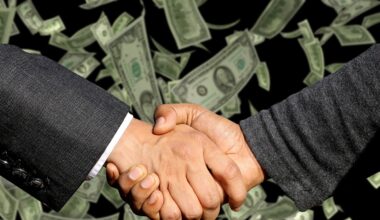The Intersection of Culture, Economics, and Public Policy
The interplay of culture and economics is a compelling area that examines how cultural factors shape economic behavior. Culture influences consumer preferences, spending habits, and the general economic environment, making it integral to economic policies. In this overview, we will dissect various elements such as cultural identity and its impact on economic engagement. Cultural artifacts, traditions, and societal values significantly affect the type of goods and services that thrive in the market. Consequently, policymakers must account for cultural dynamics when crafting effective economic strategies. Recognizing the cultural context can lead to better resource allocation and foster a more equitable economic environment. By understanding cultural economics, we can identify instances where cultural richness can enhance economic value. Cultural institutions like museums and theaters significantly contribute to local economies through job creation, tourism, and community engagement. These insights highlight the importance of intertwining cultural considerations with economic policies to promote inclusive growth and innovation.
A critical aspect of cultural economics revolves around the integration of culture in economic theory and practice. Economists have long recognized that traditional economic metrics may fall short if they disregard cultural contexts. Hence, economic models increasingly incorporate cultural dimensions to grasp market behaviors and consumer preferences thoroughly. For instance, studies have shown that regions with vibrant cultural sectors often exhibit higher economic resilience. This correlation emphasizes the need for public policies that not only support economic growth but also sustain cultural vitality. Additionally, by fostering cultural entrepreneurship, cities can cultivate innovation and creativity, as emergent businesses often derive inspiration from their cultural landscapes. In this realm, cultural equity becomes paramount, ensuring that all community sectors benefit from economic advancements. Policymakers must navigate the delicate balance between cultural preservation and economic development, directing focus toward strategies that enhance both dimensions. By creating inclusive cultural policies, cities can not only stimulate their economies but also reinforce their identities. Furthermore, sustaining local art scenes, music activities, and festivals adds vibrancy to community life, too.
The Role of Public Policy
Public policy plays a vital role in shaping the relationship between culture and economics. Governments can either promote or hinder cultural development significantly through their legislative frameworks. By investing in cultural infrastructure, funding for the arts, and educational programs, policymakers directly impact the economic landscape. Regions that prioritize cultural investments often see ripple effects in tourism, local business growth, and job creation. Conversely, insufficient support for cultural initiatives can stifle economic potential. Cultural policies can include tax incentives for artists or grants for community projects that stimulate local economies. Moreover, cultural diplomacy is another dimension where public policies foster international relations, facilitating trade and cultural exchanges. Governments must approach cultural policy with a comprehensive understanding of its economic implications and long-term benefits. Additionally, engaging stakeholders in policy creation ensures that diverse voices inform decisions, enhancing both cultural relevance and economic efficacy. Collaboration between local community leaders, artists, and business owners is essential for crafting robust policies that accommodate various perspectives while showcasing local culture and promoting economic prosperity.
The significance of cultural heritage cannot be overstated in the context of economic development. Heritage sites often attract a plethora of tourists, contributing substantially to local economies. Many cities harness their unique histories, architecture, and cultural practices to draw visitors and generate revenue. Governments often implement policies that protect these invaluable assets, preserving cultural identity while also promoting tourism. This dual strategy emerges as an integral facet of cultural economics, wherein the maintenance and promotion of heritage sites translate to tangible economic benefits. Furthermore, events like cultural festivals serve as catalysts for local businesses, amplifying their visibility and consumer engagement. Publicly funded heritage conservation projects can lead to further investment in the surrounding area, significantly boosting economic activity. Additionally, partnerships with private entities foster innovation within heritage sectors, enhancing their appeal and financial viability. Stakeholders must grasp that cultural heritage is a living entity that continues to evolve and adapt, thus necessitating ongoing investment and strategic planning. Policymakers must embrace innovative approaches that encourage synergy between heritage preservation and economic sustainability for long-term gains.
The Impact of Globalization
In the age of globalization, the intersection of culture and economics has become more complex, presenting both challenges and opportunities. Globalization facilitates cultural exchange, which can broaden economic horizons but also risks diluting local cultures. Economic policies must address these dynamics to foster cultural resilience in the face of global competition. The influx of cultural imports can impact local industries, forcing them to adapt or risk extinction. Policymakers must strike a balance between embracing global cultural trends and preserving regional uniqueness. This requires a thorough analysis of how global forces influence local economies. Strengthening local brands and integrating cultural narratives into products often enhances market competitiveness. Additionally, educational programs highlighting the importance of local culture amid globalization can nurture a sense of identity among communities. Local entrepreneurs who incorporate cultural assets into their business models often build strong connections with consumers looking for authenticity. As such, crafting policy frameworks that encourage innovative approaches to leverage cultural assets in a globalized economy is essential for sustainable growth. Ultimately, embracing cultural distinctive features can attract global markets and enhance economic stability.
Technology plays a pivotal role in shaping cultural economics. The digital revolution has transformed how culture is created, shared, and consumed, impacting economic models in unprecedented ways. Emerging technologies have given rise to new platforms for cultural expression, allowing artists to reach wider audiences and monetize their work effectively. Policymakers must understand the implications of technological advancements on cultural industries, as they must equip the workforce for evolving job landscapes. Digital literacy programs can empower individuals to harness new technologies, fostering innovation within creative sectors. Additionally, fostering synergies between technology and cultural practices can yield significant economic benefits, such as creating immersive experiences that attract tourists. E-commerce platforms enable local artisans to market their products globally, contributing to economic diversification. As cultural institutions adapt to technological changes, they find new ways to engage audiences, establishing sustainable funding models through digital channels. It is crucial to recognize the dual nature of technology as both an enabler and a disruptor, ensuring thoughtful policy approaches that protect cultural integrity while fostering economic development. Policymakers should focus on collaborative strategies that can help mitigate challenges while promoting growth in cultural sectors.
Conclusion
In conclusion, understanding the intersection of culture, economics, and public policy is essential for crafting effective strategies for sustainable growth. Cultural economics emphasizes the interdependence of cultural factors and economic behaviors, necessitating inclusive policy frameworks that recognize this connection. By investing in cultural initiatives, embracing globalization’s complexity, and adapting to technological changes, policymakers can significantly enhance economic resilience and social cohesion. Societal well-being is closely linked to cultural vitality, reinforcing the need for ongoing dialogue between economists, urban planners, and cultural leaders. Such conversations foster shared understanding, leading to better policy outcomes for communities. Furthermore, cultural engagement enhances quality of life and stimulates economic activity. Governments must advocate for active participation of diverse stakeholders, ensuring that policies align with the realities of local culture and economic needs. As societies navigate an ever-changing world, the integration of cultural insights into economic policies can drive innovation and inclusivity. Ultimately, a holistic approach that embraces cultural dimensions will pave the way for a prosperous and equitable future, where both culture and economy can thrive in harmony.
By promoting cultural economics as a core component of public policy, we can foster vibrant communities and a flourishing economy, establishing a more sustainable society for future generations.


